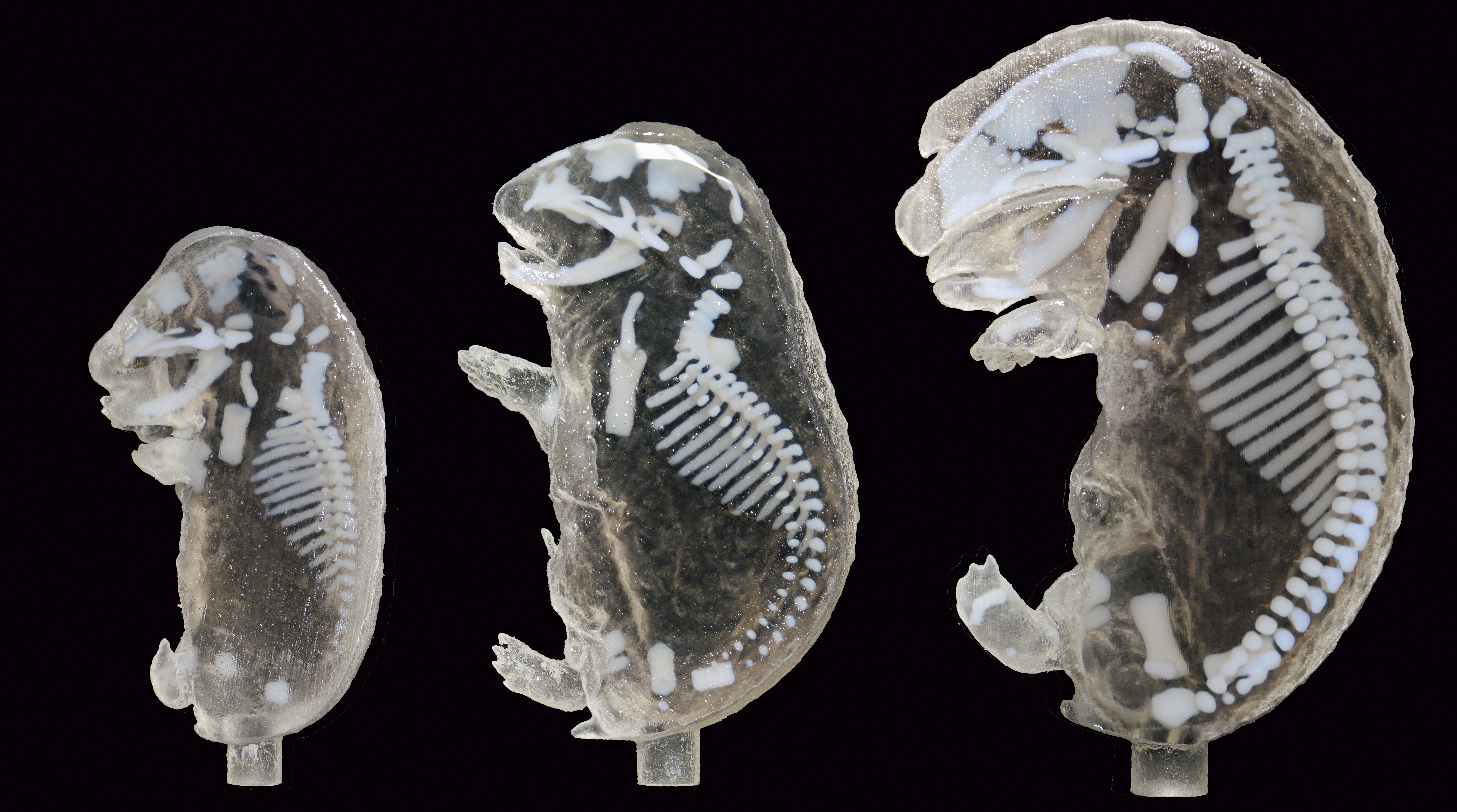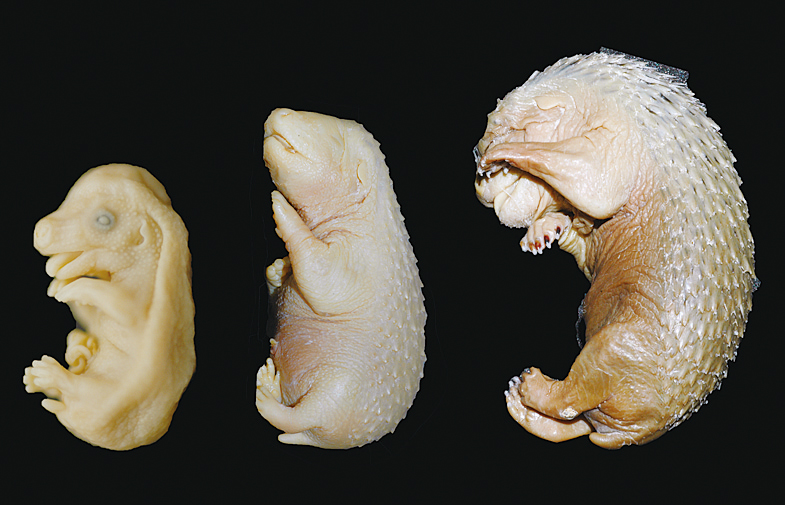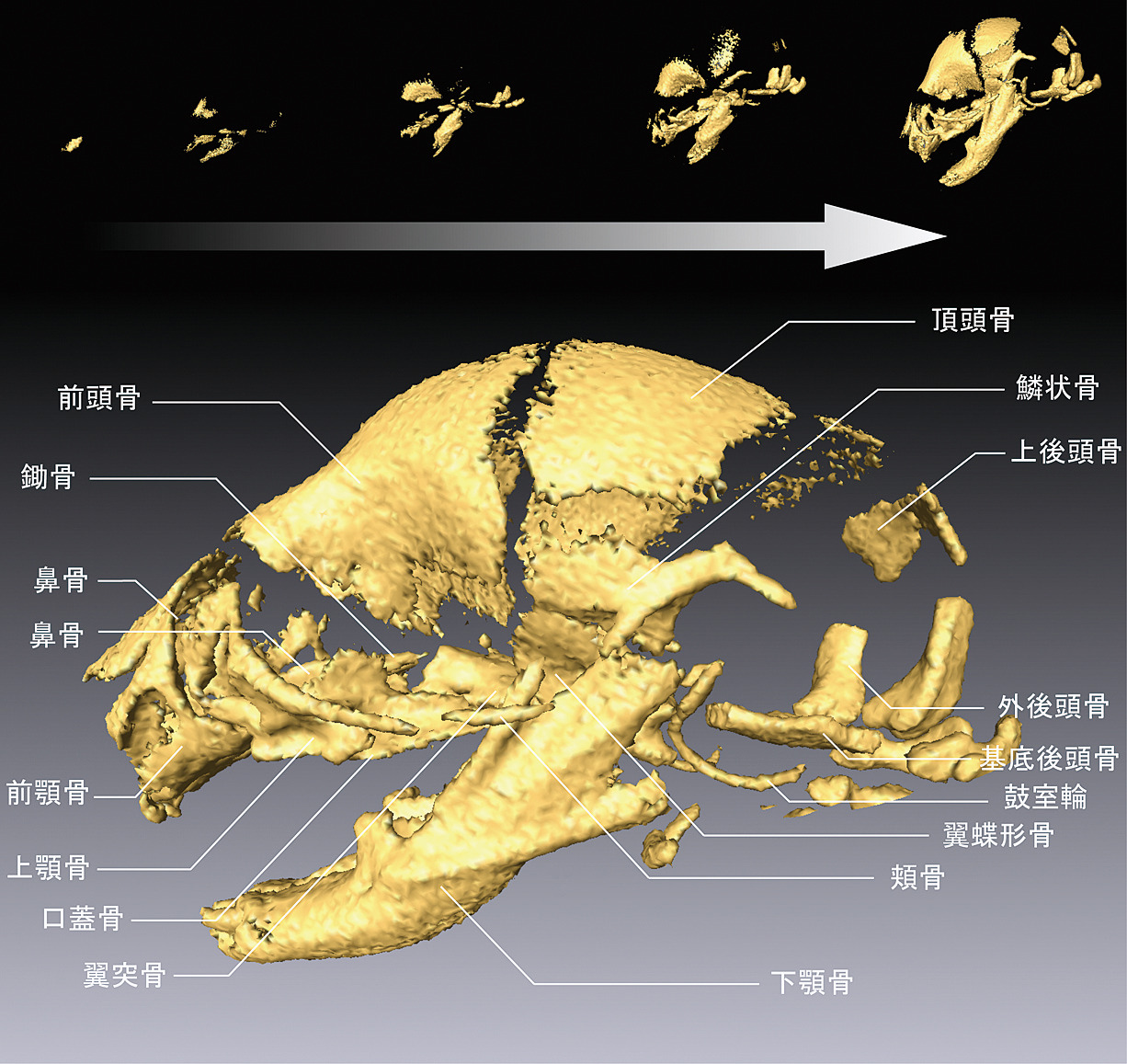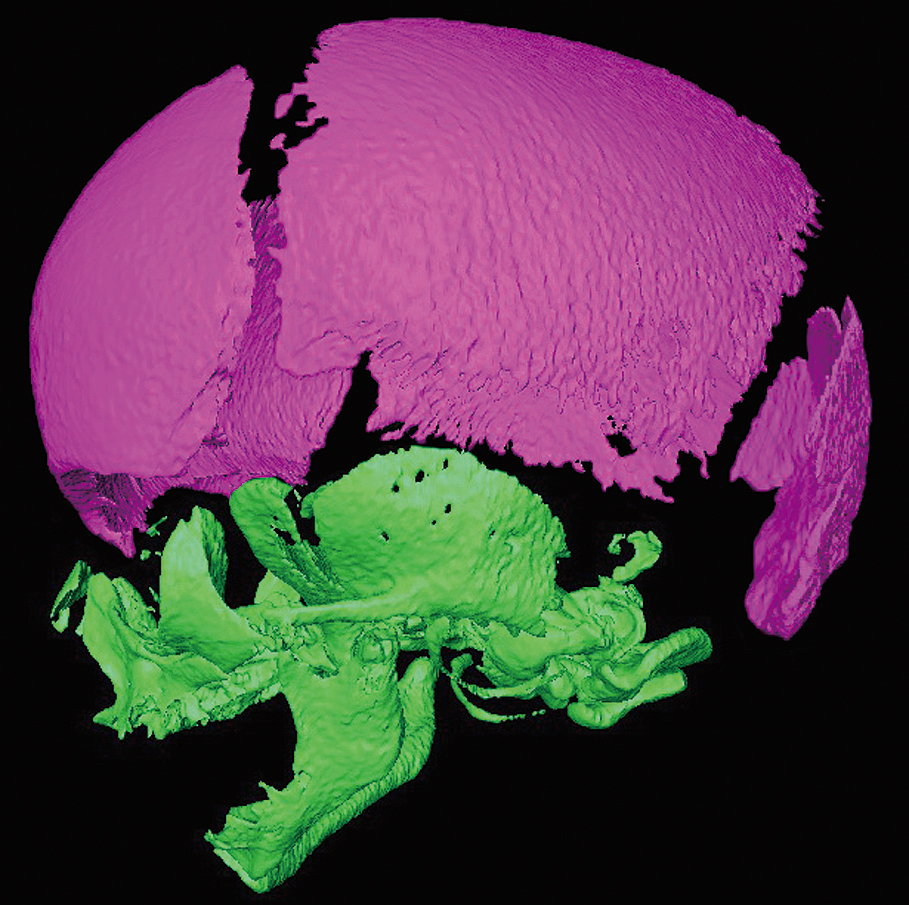B41
Developmental series of fetal hedgehogs
the evolution and development of skeletal body in mammals
Among animals on earth, those which possess bones are grouped as “vertebrates”. We human are of course members of vertebrates. For vertebrates, bones play the role as the framework for the body, scaffold for the muscle which generate forces, and protection against the outer environment. The bones which constitute the body do not develop simultaneously. They rather develop one by one. The specimens shown in this section are 3D prints of fetal series of Amur hedghogs (Erinaceus amurensis). They were scanned by high resolution microCT scanner and printed to show the flesh and bones. Here we can observe the bones gradually being formed. Within the head region, we can see the bones developing as small islands and then growing and fusing with one another. In general, the mammalian skull consists of about 20 bone elements. These elements originate asynchronously and finally shape the body. To develop which bone earlier is a critical issue for the organism. Among mammals, the bone which develops earlier than all other bones is the mandible. The mandible is the hardest bone within the body and is the bone which houses the teeth which are the hardest elements within the body. The mandible is required to be considerably hard and tough as to withstand the stress generated during mastication. The mandible needs to start to accumulate calcium phosphate as early as possible to invest longer time to build a more resistant bone. Recent studies by the author have revealed that some rules and patterns exist in the skeletal ossification sequence. It is now clear that the developmental timing of the skull roof bones greatly varies among mammals. Through comparing developing fetal series of more than 100 mammalian species, it was discovered that the developing timing of the skull roof bones (the frontal, parietal, and the supraoccipital) is negatively correlated with the relative size of the brain against body size. This indicates that larger-brained animals develop the skull roof bones relatively earlier than other bones. It is possible that the skull roof bones develop earlier in large-brained species in order to keep up with the fast growing brain and physically cover and protect the brain. (Daisuke Koyabu)
References
Koyabu, D. et al. (2011) Heterochrony and developmental modularity of cranial osteogenesis in lipotyphlan mammals. Evo Devo 2: 21.
Koyabu, D. et al. (2012) Paleontological and developmental evidence resolve the homology and dual embryonic origin of a mammalian skull bone, the interparietal. Proceedings of the National Academy of Sciences of the United States of America 109 (35): 14075–14080.
Koyabu, D. et al. (2014) Mammalian skull heterochrony reveals modular evolution and a link between cranial development and brain size. Nature Communications 5: 365.




